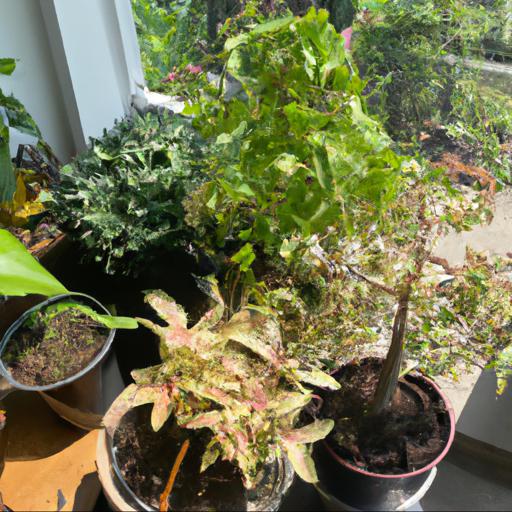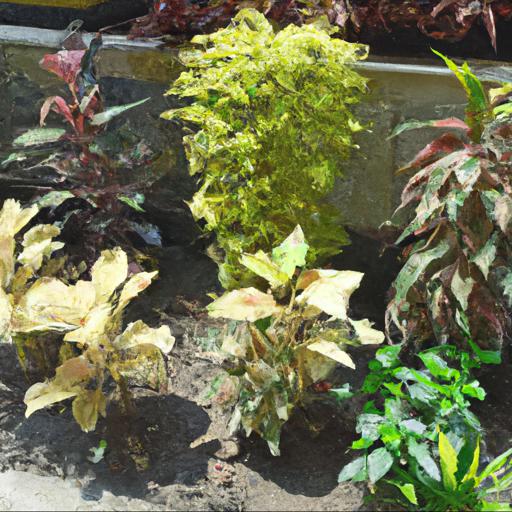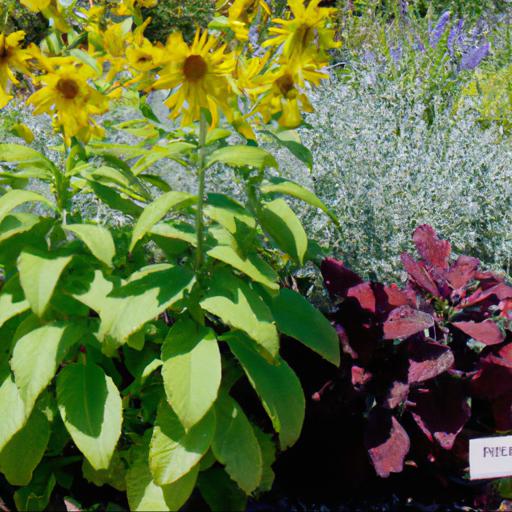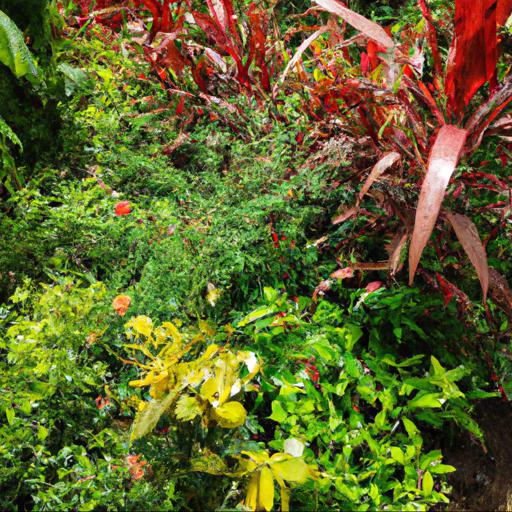Are you looking for the perfect plant combinations for a full sun garden? With the right selection of plants, you can create a stunning garden that will thrive in the sun.
From annuals to perennials, there are a variety of plants that can be used to create a beautiful and vibrant display of color. In this blog, we’ll explore the best plant combinations for full sun and discuss how to care for them to ensure they reach their full potential. With the right combination of plants, you can create a garden that will be the envy of the neighborhood!
Benefits of plant combinations for full sun

When gardening in full sun, gardeners should take advantage of the benefits of combining multiple plants together. Plant combinations can help create a lush and vibrant garden that can resist the challenges of weather, critters and disease.
By carefully selecting compatible plants, gardeners can increase the beauty of their gardens and create a landscape that is both visually appealing and functional. For example, planting a combination of ground cover, ornamental grasses and woody shrubs will create a layered effect in the garden. Ground covers, such as Ajuga, help hold soil in place, prevent weeds, and allow for a layer of shade and insulation for the other plants.
Grasses, like maiden grass, ofer a bold and airy look which will contrast nicely with the surrounding greenery. Finally, woody shrubs can be used to add height and visual interest to an area. By combining these three types of plants, gardeners can create a beautiful and vibrant space in a sunny area.
Other beneficial combinations could include shrubs, wildflowers and annuals. Shrubs like azaleas and rhododendrons can be used to provide a layer of evergreen foliage throughout the year.
Wildflowers, like Indian blanket and coreopsis, are native to North America and will attract birds and other beneficial pollinators. Finally, annuals like zinnias and cosmos, will fill in any gaps in the early season, their bright colors adding visual Interest. Through these combinations, a garden can become a diverse and eye-catching habitat, full of interesting colors and shapes.
By selecting plants that are suitable for full sun and combining them in attractive and useful combinations, gardeners can create beautiful and functional spaces in the sun. Through careful selection of compatible plants, gardeners can create vibrant and inviting spaces in their gardens that will brighten up any yard.
Types of plant combinations for full sun

onlyWhen it comes to finding suitable plant combinations for full sun garden beds, experienced green-fingered gardeners should be aware of several different factors. The intensity of sunlight and the temperatures in the region should all be taken into account, as different types of plants require certain conditions to grow. In addition, to ensure that the plants have the chance to thrive, gardeners should look for plants that are suited to their particular climate.
For full sun gardens, the best approach is to find plants that are able to withstand the heat and light, whilst remaining healthy and vibrant. Suitable choices include drought tolerant plants such as cacti, succulents, ornamental grasses and shrubs, as well as perennial flowers such as black-eyed Susans, lantanas and daylilies.
Annuals such as marigolds, petunias and impatiens can also be planted in full sun gardens, providing fresh bursts of colour. Another great way to create attractive, eye-catching garden beds is to select interesting foliage and texture combinations. Plants such as variegated euonymus, Japanese privet and Japanese aralia provide great contrast and texture, and can be incorporated with plants that flower, such as lavender, Mexican sunflowers or climbing roses.
This creates a garden design full of variety and interest that will give pleasure all year round. Finally, it’s important to make sure that all the plants have the right amount of water, light and nutrition.
Water the plants regularly in dry weather, except those that are drought tolerant, and apply fertiliser after planting. This will help the plants to become established and give them a fighting chance of flourishing in their full sun positions. With careful consideration of what plants are suitable, and an eye on the maintenance, full sun gardens can be filled with beautiful combinations of flowers, foliage and texture.
Tips for choosing the right plant combinations for full sun

Having a garden can be as rewarding as it is hard work. With the right choice of plants, you can turn your outdoor space into a beautiful, tranquil oasis. But if your outdoor area is often a scorching hot pot of sunshine, the challenge of selecting the right plants to thrive in your location can be daunting.
Full sun environments can be finicky, and selecting plants that can withstand hot, dry and direct sunlight is essential for success. When searching for the best plants for full sun conditions, think about what combinations will work well together.
Each plant has different characteristics, such as drought tolerance, color, size and seasonal bloom times. When selecting your plants, look for flowers and foliage in the same family, but with different looks, sizes, and shapes.
Choose plants with a mix of variegations, foliage textures, and shapes that can create an interesting layered look. Flowering plants that bloom at different times and stages can be planted to ensure a continual, fragrant show all season long. When planting in full sun, never underestimate the power of drought-tolerant plants.
Pick specific plants that thrive in heat and are known to need less water and fertilisation requirements. Consider native plants that are already adapted to local weather conditions, as they will have the best chance of succeeding. Other great choices include succulents, ornamental grasses, and herbs.
For long-lasting, brightly-colored flowers, consider cone flowers, marigolds, and petunias. For foliage, evergreen shrubs and little-leaf boxwoods are great option for a deep green backdrop.
In conclusion, full sun environments require careful planning and thought when deciding which plants to select for your garden. Mixing flowering and foliage plants in the same family and from different season can create beautiful plant combinations that will display season long. Drought tolerant plants are great for full sun areas, and using natives or plants adapted for the local weather can be one of the best choices for success. With the right selections, your garden will burst with color, texture and a unique ebb and flow of life all season long.
Our video recommendation
Conclusion
This article discussed the various plant combinations that can be used to create a beautiful, full-sun garden. It highlighted the importance of selecting the right plants for the environment, and the benefits of grouping them together for maximum impact.
With careful consideration and selection, you can create a stunning garden that will thrive in the sun.
FAQ
What are the best plants for full sun?
Some of the best plants for full sun include lavender, rosemary, sage, coreopsis, coneflower, salvia, daylilies, yarrow, and black-eyed Susan.
What are the most common plant combinations for full sun?
The most common plant combinations for full sun include lavender and rosemary, marigolds and petunias, and daylilies and daisies.
What are the benefits of planting in full sun?
The benefits of planting in full sun include increased growth rate, higher yields, and improved disease resistance. Additionally, plants in full sun are more likely to produce flowers and fruit.
What are the best flowering plants for full sun?
Some of the best flowering plants for full sun include marigolds, zinnias, petunias, sunflowers, and cosmos.
What are the best shrubs for full sun?
Some of the best shrubs for full sun include Rose of Sharon, Butterfly Bush, Dwarf Alberta Spruce, Boxwood, and Dwarf Japanese Yew.
What are the best trees for full sun?
The best trees for full sun are those that are drought-tolerant and can handle intense heat, such as oaks, maples, elms, and cottonwoods.

